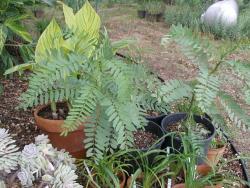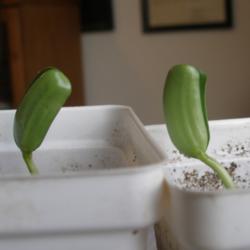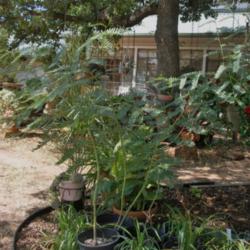@frostweed I have cattle so I want to be sure of the identity here. I found it as Sesbania vesicaria in the net search, but the database says that is a synonym for Glottidium vesicarium. Here are some photos.
a pod and beans from last year that I didn't plant.
sprouted beans

juvenile plant
plant that is beginning to bloom - about 7' tall
the blooms, which I find attractive.
I think it's made a nice ornamental plant, especially in the situation where I'm growing it. I may save and plant beans again because of that. But if the identity is correct, or probably even if I've got the correct plant family, it's not such a good thing in the pasture. It grows in a very limited way here staying confined to the dry river bed in dry years, so there are no plants this year because the river ran too often with the rain we've had. Normally, though there are a few plants. The quote from the following website will explain why I want it identified, I think.
http://essmextension.tamu.edu/...
Toxic Agent
Bag-pod sesbania contains sesbaimide, which is concentrated in the seed. Fresh green plants are unpalatable; only the mature dry seedpods and seeds are consumed. Animals pastured with the plant during the growing season are seldom poisoned, but naïve ruminants, especially goats and cattle, are often poisoned when they are introduced to the dried plants in the fall and winter. Clinical observations indicate that newly mature seeds are more toxic than those that have weathered on the plant. The seeds of bag-pod sesbania (S. vesicaria) seem to be more toxic than those of sennabean (S. drummondii).
Signs of Livestock Ingestion
Signs of poisoning occur within 1 or 2 days after consumption and can include: depression, diarrhea, Weakness, Rapid heart rate, Labored breathing, and Death.
Death quickly follows the onset of clinical signs, which in many cases go unobserved. Seeds and/or seed fragments are routinely found in the rumen contents of animals that die from eating this plant.


 juvenile plant
juvenile plant
